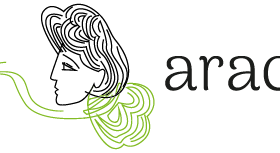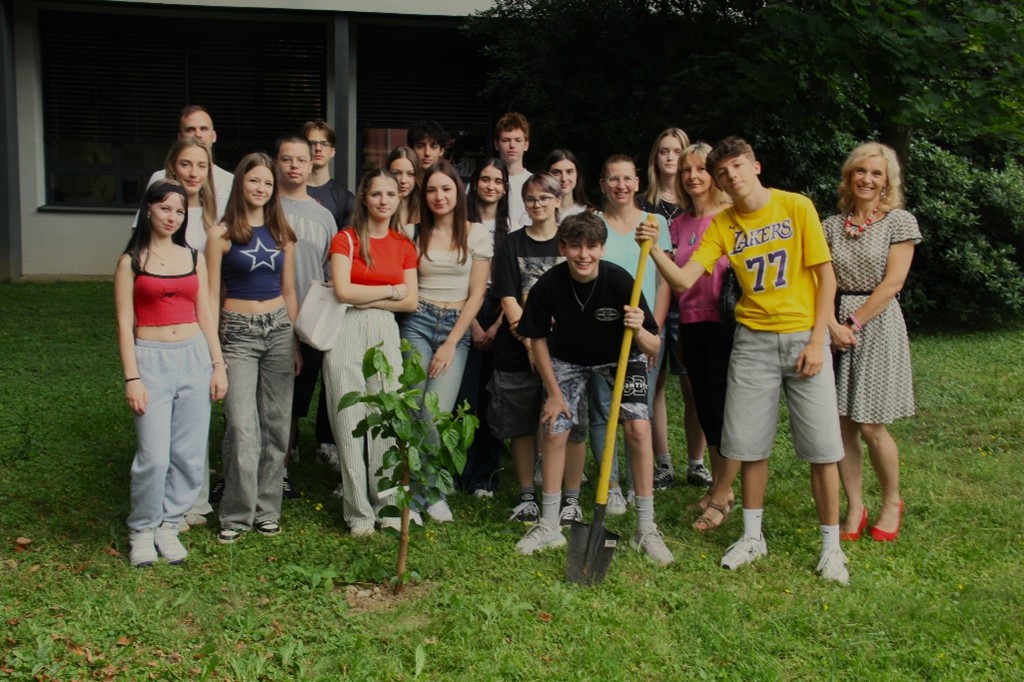In the 2024/2025 school year, students mentored by professors from the Nova Gorica Grammar School participated in the international Horizon project ARACNE (Advocating the Role of Silk Art and Cultural Heritage at National and European Scale). This project aims to explore and preserve the production and processing of silk across Europe. One of the project’s goals is to develop the European Silk Route as an interactive map of points of interest related to natural and cultural heritage of silk production and processing, connecting schools, sericultural regions, and stories from various countries.
The students’ participation took place in several phases and involved interactive integration of various subject areas, such as history, geography, biology, ethnology, art, and informatics. Under the guidance of geography teacher Liba Čubej, biology teacher Janina Žorž, and principal Ines Vižin, a professor of French language, the students explored the historical remnants of the once-rich, natural, and cultural heritage of sericulture in the Gorizia region. They contributed to the development of the interactive map of the European Silk Route—the European Silk Route School Map— which collects and gathers points of interest from schools in the project’s partner countries.
As part of the project, the students conducted several research activities:
- Inventory of Mulberry Trees Using the MorusApp Application: In the biological and geographical section of their research, students recorded 25 locations of old mulberry trees in the areas of Nova and Stara Gorica, as well as the surrounding regions, using the MorusApp application (https://morusapp.aracneproject.eu/login). During their fieldwork, they collected basic information about the trees and, alongside photographs, created a digital map using the ArcGIS tool. This effort contributed to the development of the European Silk Route map.
- Inventory of the Cultural Heritage of Sericulture: In the cultural fieldwork segment, students explored locations associated with the production and processing of silk in the past. Utilizing archival materials, interviews with elderly villagers, and site visits, they gathered valuable stories and data concerning the local history of sericulture. A central part of their research involved interviewing local older residents who reminisced about silkworm rearing from their childhood. These conversations highlighted the challenges of daily mulberry leaf harvesting, the demanding care of silkworms, and their memories of as well as their memories of everyday life during that period.
- Creation of an Educational Poster on the Life Cycle of the Silkworm: As part of their biology lessons, students designed an illustrated poster depicting the four main stages of the silkworm’s life cycle: egg, larva, cocoon, and adult moth. This project harmonized scientific research with artistic expression and enhanced the students’ understanding of the silkworm’s life cycle and the tradition of sericulture through creative work.
- Visit to a Local Silk Producer and Presentation of Traditional Silk Reeling: In the village of Selo, near Ajdovščina, students visited a local expert who demonstrated the complete process of reeling raw silk—from soaking the cocoons in hot water to manually reeling the silk threads on the traditional device “filanda”. The video recording vividly illustrated the precision, knowledge, and manual skills required for this traditional craft.
During the final presentation of activities in a contest, information on selected points of interest was shared, with the participation from several secondary schools involved in the ARACNE project across partner countries (Spain, Italy, Georgia, and Greece). The students from Nova Gorica Grammar School achieved an impressive second place in the category of points of interest in cultural and natural heritage, highlighting the quality of their work and the significance of researching the rich local Gorizia tradition within a broader European context.
Additionally, as part of the project, the students also met several times with researchers from the Faculty of Agriculture and Life Sciences of the University of Maribor, who provided them with guidance and professional support throughout creating the virtual map. As a result, the students gained direct insight into scientific work, research methodology, and modern digital tools for spatial mapping. Their contributions to points of interest in natural and cultural heritage are available in the educational section of the ARACNE project website: https://aracneproject.eu/european-silk-route-school-map.
In recognition of their outstanding work and successful collaboration, the students received a symbolic gift from the Faculty of Agriculture and Life Sciences of the University of Maribor—a white mulberry sapling bearing dark fruits. They planted the mulberry tree in the school garden, accompanied by principal Ines Vižin, geography teacher Liba Čubej, and biology teacher Janina Žorž.
Andreja Urbanek Krajnc, dr. Mario Lešnik in Tina Lešnik,
Faculty of Agriculture and Life Sciences, University of Maribor


